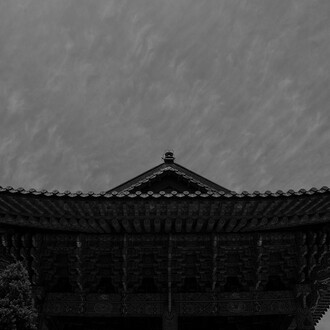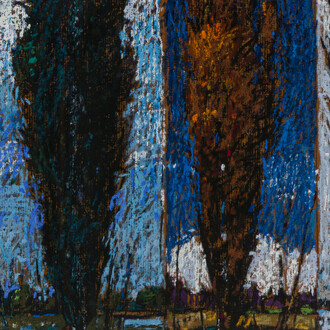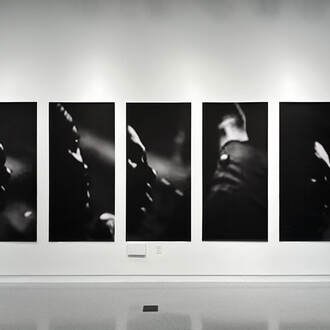[…] And then the galleons want
to shop in the mall in the suburbs.
Everything they see there is like the secretsThey once carried in their holds.
Racks of blouses like sacks of gold, tiers of blendersLike crates of silver. The food courts
Remind them of their full bellies before the trips home,The weight in the center of the body
After it has eaten everything, the stomach glossy and pinkAs a shopping bag. […]
(Rick Barot, "Galleons 8," The galleons [Milkweed Editions, 2020])
The word hold bears many meanings. Among other nuances, when used as a verb, to hold can indicate possession or ownership; it can suggest physical restraint or temporal delay; and it can reference one’s perspective or judgment, one’s esteem or position. When used as a noun, the hold indicates storage space. Often related to transport, it references the cargo area of a plane or ship, and is usually interior, under and below the main cabin or decks. These multiple meanings recur across Rick Barot’s poetry collection, The Galleons, which leaps across centuries and continents to consider the enduring hold of the Manila galleon on contemporary life. Such ideas find visible form in the artworks presented in “Galleon Trade” at Silverlens New York. Featuring works by artists from the primary ports of call of this once-dominant global trade route, the exhibition offers a conceptual framework that draws on the historical and material legacies of the Manila Galleon, its ships and its goods, as well as the pervasive, if often invisible, lines of connection about memory and origins.
Starting in 1565 and lasting nearly two and a half centuries until 1815, the Manila Galleon encompassed an armada of ships controlled by the Spanish empire. As a precursor to today’s globalized economy, these vessels carried and deposited resources across a geographically vast network of exchange. However, the significance of the Manila Galleon extended beyond pure commerce: as a mechanism of wider geopolitical, colonial, and cultural structures, galleon trade not only prompted the circulation of goods, but also people, technology, customs and traditions. Hailing from the Philippines, Mexico, and California, the artists included in the exhibition represent the contemporary descendants of this inheritance.
This palimpsest history is manifest in the paintings of Patrick Martinez, whose Birds of a Feather, references connections across cultures, time, and material histories in its very title. A composite form, the wall-work combines the vernacular architecture and flora of Martinez’s natal Los Angeles with Filipino Machuca tile and iconography derived from ancient Mesoamerican mural paintings at Cacaxtla in Mexico. From this latter site, Martinez extracts the outline of a bird in neon, which in its original context, faced off with the Mayan god of merchants. A reference to the Indigenous trade routes that existed prior to the Spanish, Martinez’s sourcing of this imagery, in combination with his more contemporary references, extends the temporal parameters of galleon trade, fusing the deep past with the present, and encompassing wider indigenous and diasporic histories.
Jorge Rosano Gamboa and Patricia Perez Eustaquio similarly address the cultures present in the territories prior to galleon trade whose traditions later became absorbed by its commerce. Nenepilli – lengua de pacifico is a pedal-loom tapestry by Rosano, made in collaboration with master weaver José Mendoza. Like Martinez, Rosano looks to ancient Meso-American sources to develop his iconography. Here, he turns to the Zouche-Nuttall Codex to develop the curved forms which derive from symbolic representations for such elements as clouds, water, and blood, and are rendered as tongues. Dyed using indigo and cochineal, two luxury materials transported on the Manila Galleon, the work drapes in a sea of lingue that envelops the viewer within the watery environs of the galleon trade. Eustaquio also adopts the tapestry tradition in her Death of Magellan (After Amorsolo). This digitally woven work transfigures the canonical history painting by celebrated Philippine artist Fernando Amorsolo, which depicts the Spanish conquistador’s fatal attempt to circumnavigate the globe. Magellan’s failed voyage is considered a precursor to the route traversed by this Manila Galleon, and Eustaquio’s work invites us to reconsider the meaning of his death at the hands of the Indigenous peoples on island of Mactan.
Eustaquio’s tapestry is paired with her Fountain series, handwoven sculptures made from abacá, a prized fiber derived from a plant native to the Philippines used in tapestries as well as fine clothing. Playing with scale, Eustaquio weaves abacá to evoke the filigreed forms of native Philippine jewelry, exploded into grand proportions. In turning to indigenous ornamentation for information, the artist evokes another treasured material – gold – which, like abacá, circulated via the galleon trade routes. Indeed, the golden shimmer of the Fountain series is enhanced by Eustaquio’s use of gazing balls, whose mirrored surfaces invite the viewer to contemplate the past, present, and future of the intertwined histories activated in her work.
Also known as “Manila hemp,” abacá was not only valued as a commodity, but was also used to make rope and shipping cordage, essential for both Indigenous and colonial vessels of trade. At Silverlens, this connotation allows for Eustaquio’s sculpture to be read in relation to rigging or anchorage. It also invites relations between other works in the show which incorporate rope and binding, including Carmen Argote’s jackets for mom/Domestic Familial and Bernardo Pacquing’s assemblage Stowaway. Pacquing’s piece is created from urban debris salvaged in Manila, such as a found rope and a wooden rat guard, used on ships to prevent unwanted stowaways. Attached to the work’s scarred surface, these elements combine to suggest the time-worn hull of a ship, whose cargo must be protected.
The vulnerability and potential loss of material contents also find form in two works from Argote’s for the Willow Pattern series. Made from raw linen, these sculptural paintings hang in looping folds that billow onto the floor. Evoking the sails of a galleon, these fabric forms are embellished with hand-sewn pockets and folds, which create porous containers into which the artist has poured oxide colorants. Reminiscent of the indigo, cochineal, and other natural dyes transported across the world by the Manila Galleon, these pigments pool, seep, and saturate the fabric in ephemeral traces of material circulation and memory.
Leaky and stained, Argote’s Willow Pattern series abstractly translates ideas related to the transport and durability of commodities. These issues are also manifest in Elaine Navas’ Bulok, a massive portrait that bisects the Viewing Room at Silverlens. Painted as a large-scale diptych, this work is the latest in Navas’ on-going engagement with the tropical fruit, so ubiquitous to Filipino culture and cuisine. Yet, in contradiction to its quotidian nature, papaya is not endemic to the region, and instead arrived to the archipelago from the Americas via galleon trade. Having been absorbed into local tastes, these exotic origins are today little recognized, and illustrate how the flows of commerce have the potential to be altered and absorbed over time. The possibilities and pitfalls of transformation are further raised via Navas’ subtle painterly gestures, which allude to rot and spoilage. With galleon trade voyages often lasting months from port to port, the susceptibility of such putrefaction remained a distinct possibility. In addition to time, the safe passage of the Manila Galleon was also under constant threat from marauding pirates, mutinies, and shipwrecks.
Though the Manila Galleon is today best known for the exchange of goods, the trade route also facilitated the circulation of people – whether as sailors or stowaways, indentured servants or slaves. This movement of bodies is implicated in the paintings by Carlos Villa featured in the exhibition, in which the artist used his own bodily imprint to create dynamic and psychologically fraught compositions. Indeed, though these works do not directly address galleon trade, Villa’s identity as a diasporic Filipino artist whose practice was based in San Francisco, raises similar implicit and indirect connections between the galleon past and our contemporary present as addressed in Barot’s poems. Building off these histories known and unknown, Jenifer K Wofford’s rosy pink and yellow abstractions reflect the artist’s invented mythology around the first Filipino basketball court in the Americas, their arcs and rectangles reminiscent of the game’s three point line. At Silverlens, these works are presented alongside Wofford’s more traditional representation of the basketball courts at Morro Bay Park. This site is recognized as the first point of arrival for Filipinos in the Americas, when crewmembers of a Spanish galleon landed in area in 1587 only to be killed by the Indigenous Chumash people. Reminiscent of Magellan’s death in Mactan, this encounter and its ongoing reverberations via Wofford’s creative practice exemplifies the hold of Galleon Trade and its continued legacy.
(Words by Susanna V. Temkin)
















